Pan Am Catering Items
The 1960s "Presidential" Pattern
The 1960s "Presidential" Pattern
In the 1960s Pan Am used a Noritake pattern called the "President" pattern. All items were manufactured in Japan. The plates have a blue rim and feature an eagle with three gold stars above the head and ten gold stars below the spread wings. The same eagle motif is also on the glasses.
Displayed are; the 9 inch dinner plate, 8 1/4 inch lunch plate, 7 1/2 inch salad/dessert plate, 6 inch bread plate, soup bowl & liner, fruit bowl, coffee cup & saucer, demitasse cup and saucer and sake or egg cup. Also shown are a red wine, white wine, sherry, cordial and "rock glass." A close up picture of the glasses can be seen farther down on this page.
The flatware included a small knife (for bread & butter or appetizer) a large entree knife, a teaspoon, soup spoon, demitasse spoon and, curiously, the pattern only had one size of fork. In the photo below two forks of the same size are shown as part of a complete meal setting. The flatware was produced by the International Silver Co. The tea & demitasse spoons can be seen on the saucers.
For more photos of the plates, glasses and flatware click on the “more pictures” button on the place setting below.
Displayed are; the 9 inch dinner plate, 8 1/4 inch lunch plate, 7 1/2 inch salad/dessert plate, 6 inch bread plate, soup bowl & liner, fruit bowl, coffee cup & saucer, demitasse cup and saucer and sake or egg cup. Also shown are a red wine, white wine, sherry, cordial and "rock glass." A close up picture of the glasses can be seen farther down on this page.
The flatware included a small knife (for bread & butter or appetizer) a large entree knife, a teaspoon, soup spoon, demitasse spoon and, curiously, the pattern only had one size of fork. In the photo below two forks of the same size are shown as part of a complete meal setting. The flatware was produced by the International Silver Co. The tea & demitasse spoons can be seen on the saucers.
For more photos of the plates, glasses and flatware click on the “more pictures” button on the place setting below.
Below are photos of the President China in-flight. The top picture is of the roast beef entree cart. The bottom picture shows the fruit & cheese cart.
When the Noritake Presidential pattern was introduced it also included an individual (single serving) coffee pot and tea pot as well as sugar bowl & creamer. Pictured below on the left is the tea pot and to the right the coffee pot. Farther down on the left is the sugar bowl and on the right the creamer. Due to the fragility of the porcelain the Noritake coffee / tea pots were discontinued in favor of the more traditional silver service.
As part of the Noritake President pattern Pan Am also introduced tray table linens and napkins to match. The linens featured the President Eagle in the center with a boarder of Pan Am globe logos. Seen below are a close up of the eagle and a long shot of the linen.
Other accent pieces were added to support the “President” brand including crystal glasses & menus. Below is an example of the President eagle brand on both a wine glass and a package of First Class almonds.
.
Other accent pieces were added to support the “President” brand including crystal glasses & menus. Below is an example of the President eagle brand on both a wine glass and a package of First Class almonds.
.
The silver (plate) coffee / tea service pictured below was introduced by Pan Am in the late 1950s and used until the early 1970s. The service featured two sizes of pots. The larger was always used for coffee while the smaller was used for Tea. Occasionally the smaller pot would be used for the demitasse service if enough first class customers requested a demitasse.
The silver service also included a sugar bowl and creamer. Also pictured is a small silver plate tray. The tray was also used throughout the flight to bring drinks and other items to first class customers at their seats as well as to present the sugar bowl and creamer during the coffee service.
Additional pieces of the Presidential pattern include the water pitcher directly below. It is silver plate and stands 7 1/4 inches tall with a 5 inch diameter. It was produced by the Grand Silver Company and is made of nickel silver as part of the "Wearbrite" line. Below the pitcher are large serving spoons, tongs and a cake/pie server. All the serving tools are identified with tiny Pan Am logos on the back of the handles.
In the early 1960s Pan Am presented Economy Class customers with a partially complete meal tray. The tray contained bread, salad & dessert. Flight attendants presented the entrée from a cart, seen below in the top picture. Later in the 1960s as the prevalence of Economy Class travel grew (and more seats were added) crews began to present complete meals on the Economy Class tray as seen in the middle picture below. The bottom picture shows various pieces of the 1960s Economy service. All are heavy duty plastic. Included are an 8 ¼ inch entrée plate, a 6 ¼ inch bread plate, a 4 ½ inch bowl, a handle cup & saucer, a cup with no handle and a 4 by 2.5 inch rectangle miscellaneous holder. All of these plastic pieces are of the same design as the Rosenthal “Charcoal” accent pieces used on the President Special flights of the late 1950s & early 1960s.
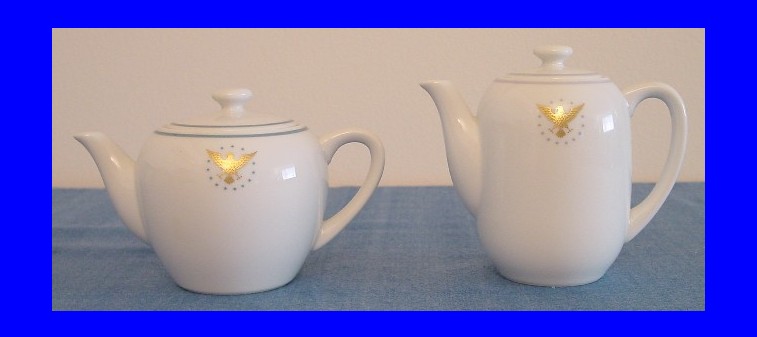
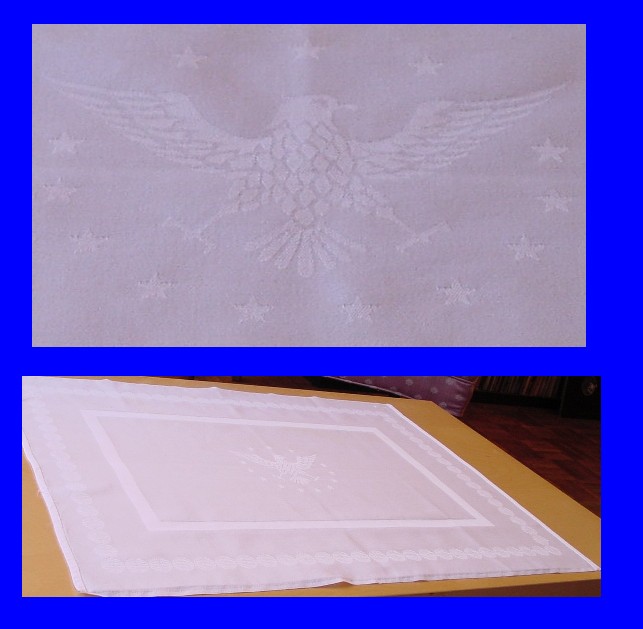

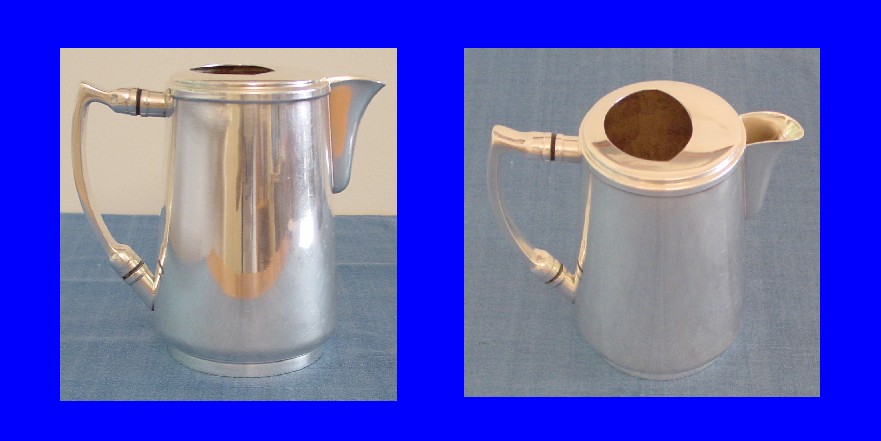
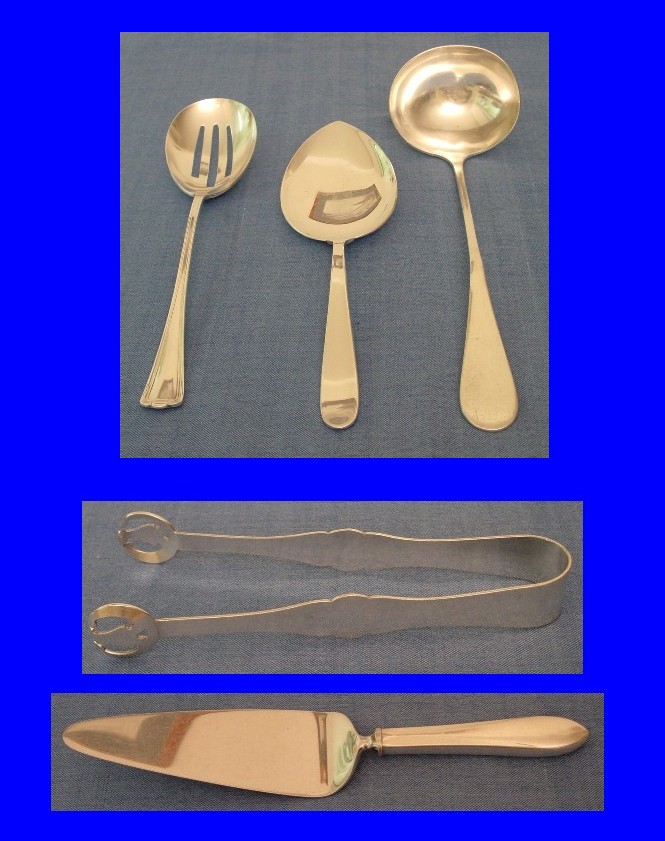
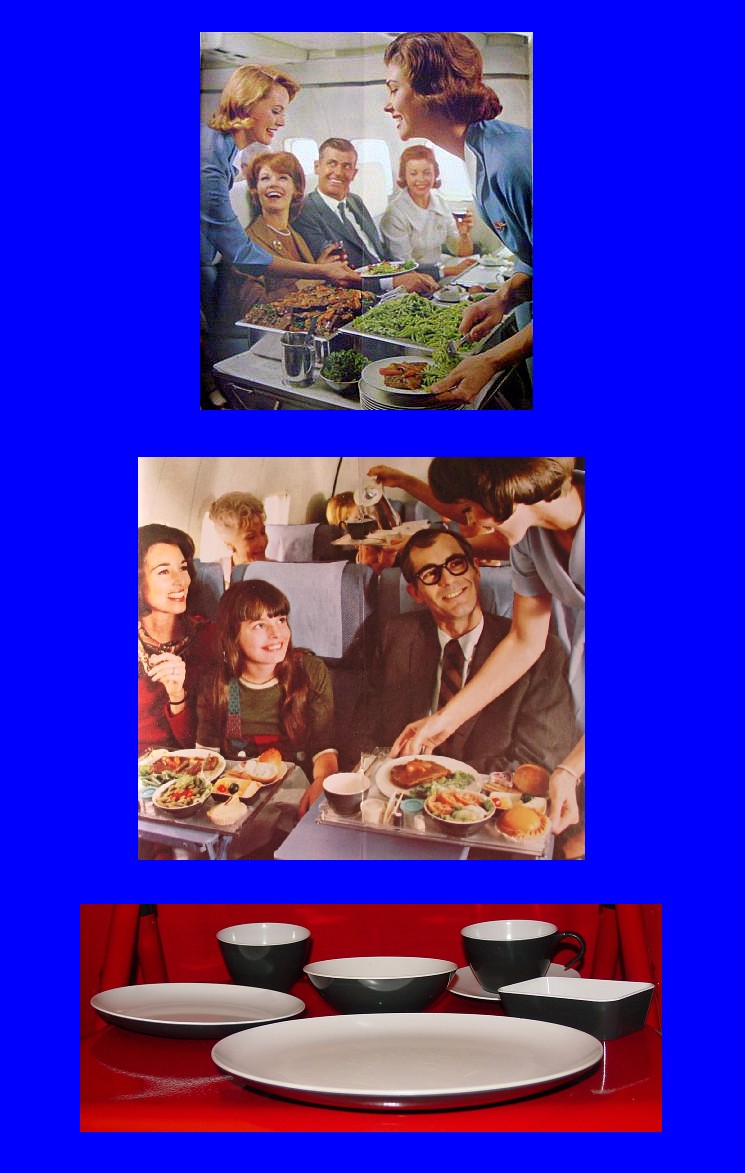
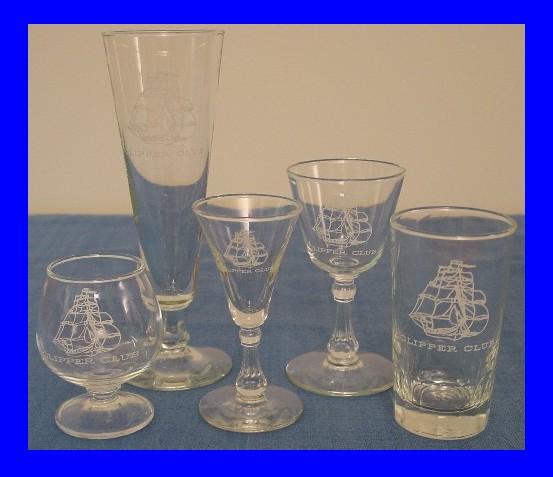
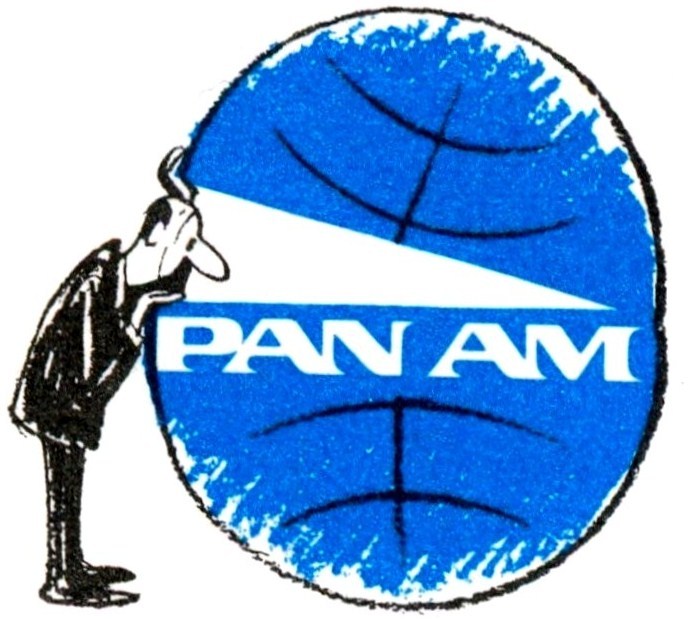
everythingPanAm.com
The Virtual Pan Am Museum
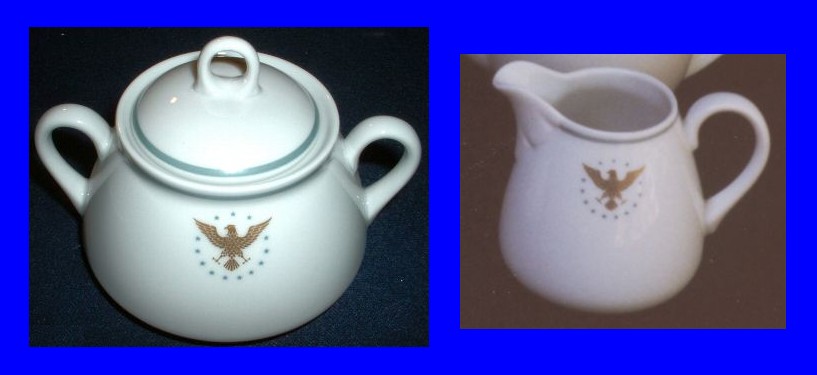
The egg cup pictured below is said to have been used as part of the President service. I have not been able to verify this. The bottom rim of the cup fits perfectly into the indentation ring of the demitasse saucer . Also the "Noritake" script found on the bottom of the egg cup is consistent with the Noritake branding of the era. Should any visitors to this page have any information on the egg cup I would appreciate if you could contact me at: pa115@aol.com

The President pattern was produced in two different color bands. The majority of the pieces shown on this page are of the lighter blue band. However, a gray band was also used. I do not know which color was produced first or for how long each color was produced. Below is a side by side comparison of the two colors. On the left is the gray band and on the right is the blue band. If any visitors to this page have any information on this please contact me at pa115@aol.com
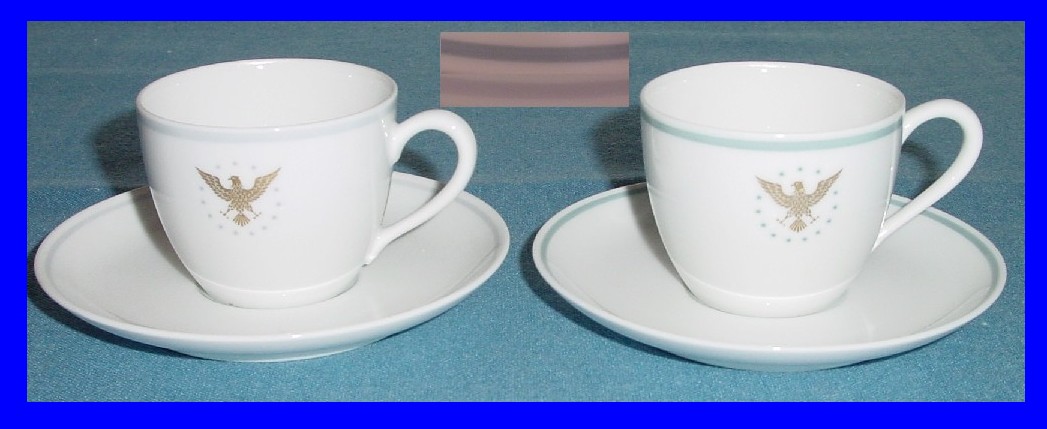
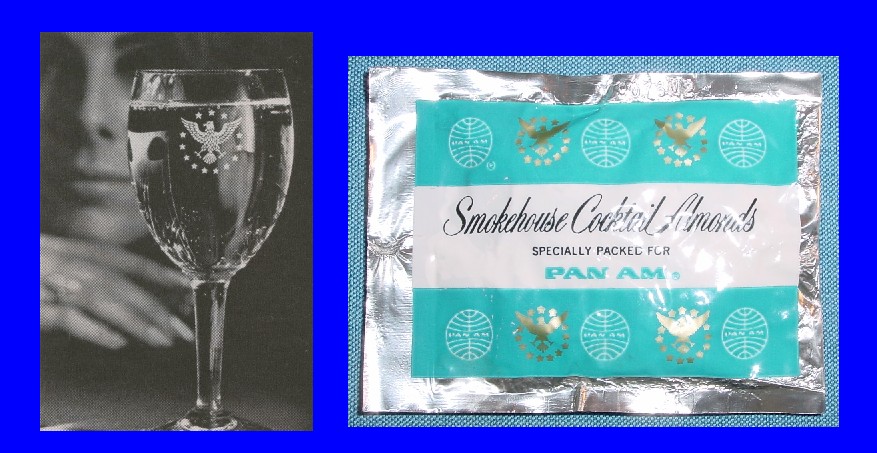
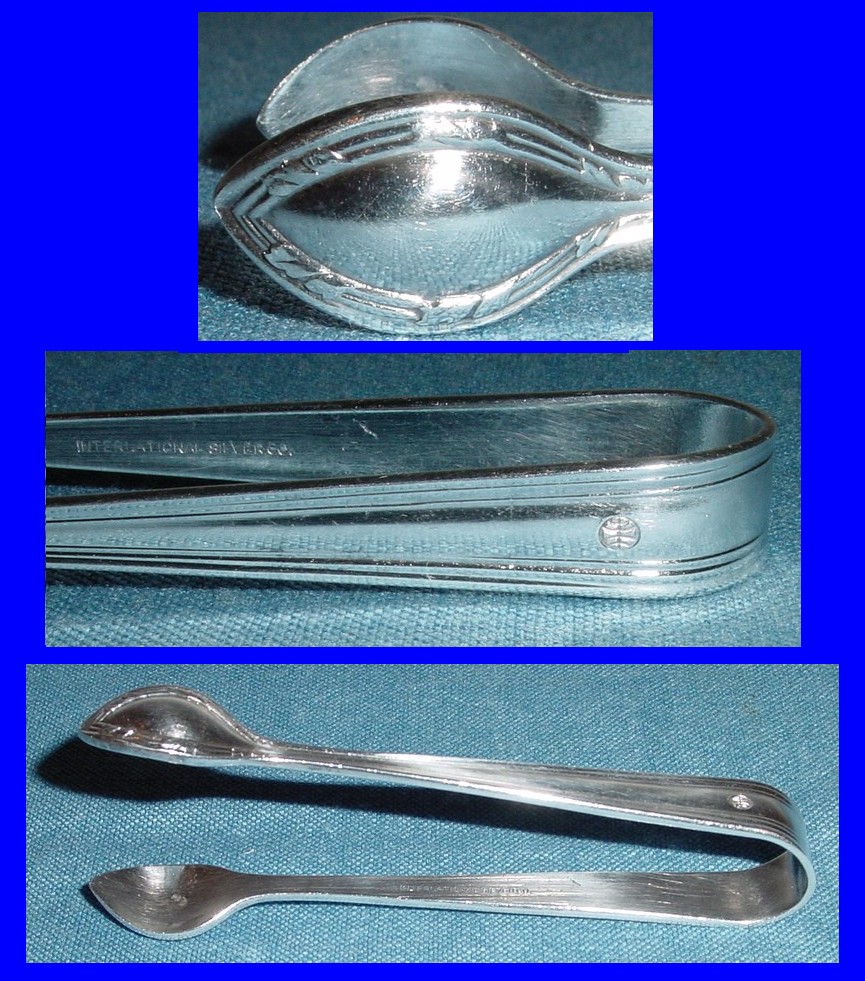
Below are three sample economy class meals from the early 1960s
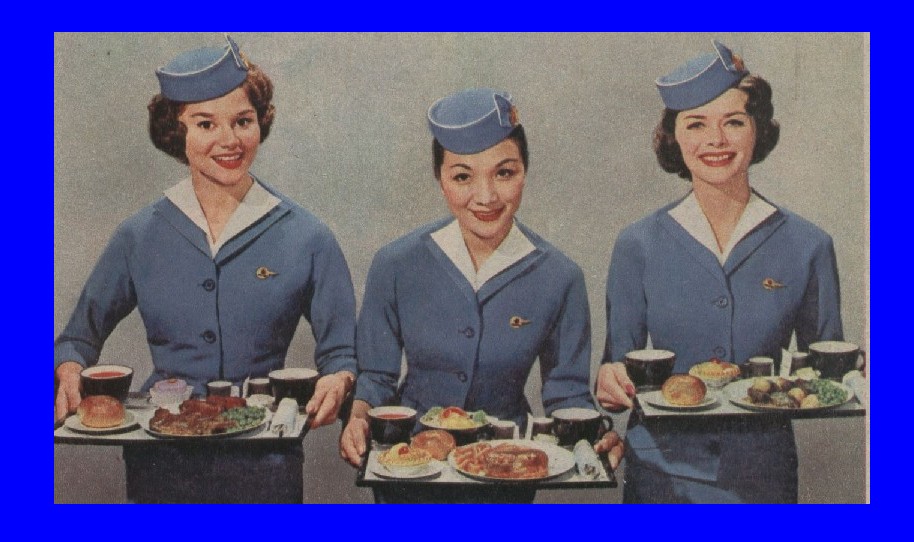
For many years Pan Am had airport membership lounges around the world known as The Clipper Club. At first the membership was by invitation only based on a potential customer’s international travel. In later years the membership was opened up to the public for a fee. The Clipper Clubs offered customers comfortable seating and drinks away from the boarding gates. In the 1960s the glasses to the right were introduced in the clubs. They remained in use until the mid 1970s.
Also, for a time in the 1960s the Noritake Clipper Ship pattern below was used in the Clipper Clubs for coffee & tea. Produced in this pattern was a cup & saucer, creamer, sugar bowl and individual coffee pot. The size & shape of all these pieces match the Noritake President pieces seen further up on this page.
Also, for a time in the 1960s the Noritake Clipper Ship pattern below was used in the Clipper Clubs for coffee & tea. Produced in this pattern was a cup & saucer, creamer, sugar bowl and individual coffee pot. The size & shape of all these pieces match the Noritake President pieces seen further up on this page.

The small sugar tongs below were created for Pan Am by International Silver Co. They measure about 6 inches long and were used for sugar cubes. They contain a small Pan Am globe logo on one side.
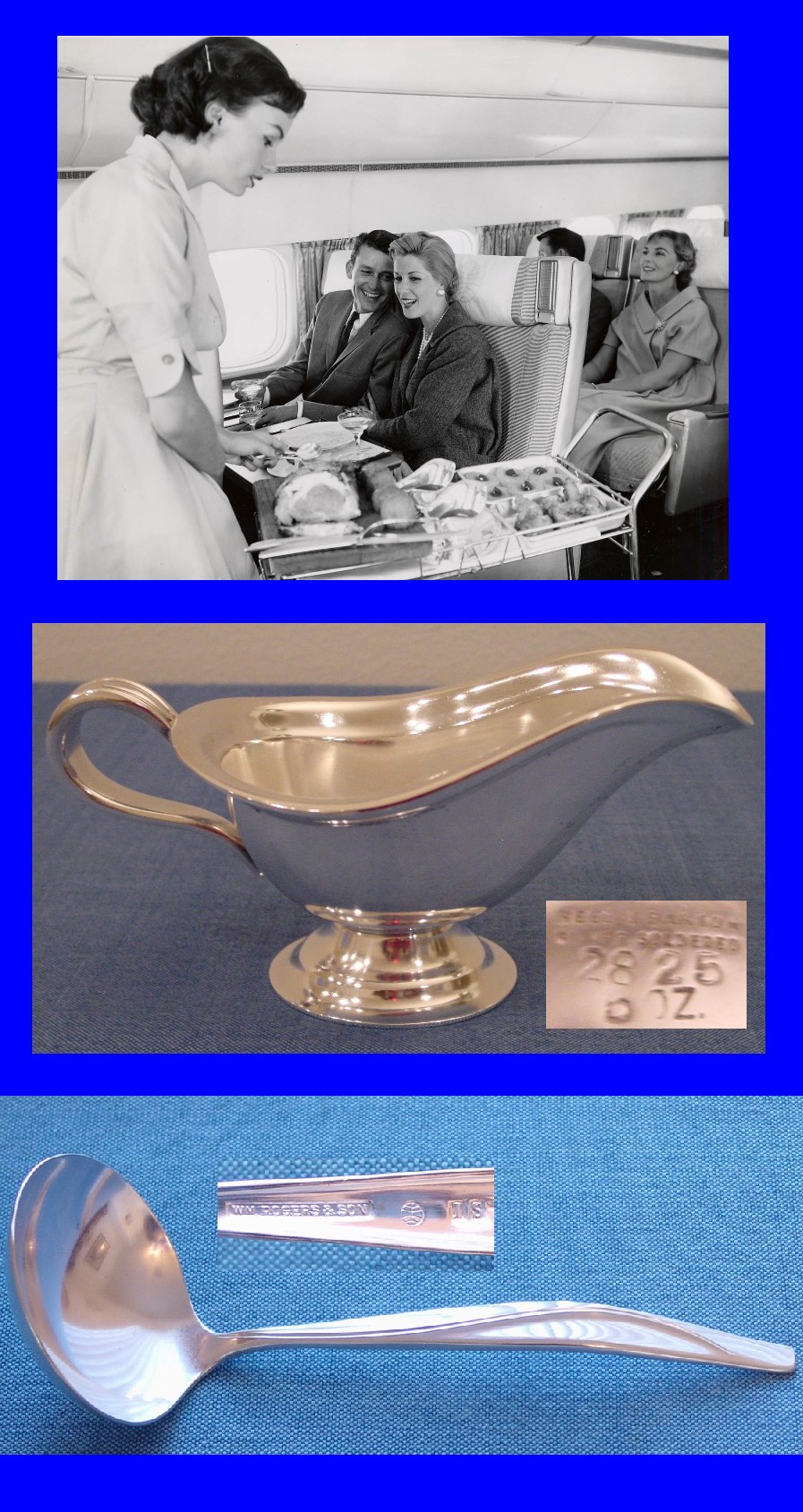
Below a Flight Attendant presents an entrée roast cart to First Class customers aboard a Pan Am DC 8. The gravy boat and ladle from this service can be seen below. The gravy boat contains the markings: Reed & Barton / Silver Soldered / 2825 / 5oz. The ladle produced by the W M Rogers Company is about 6 inches long and has a Pan Am globe logo for identification.

To the left is a paper cup from the 1960s. Standing 3 1/4 inches tall it holds 7 oz of liquid.
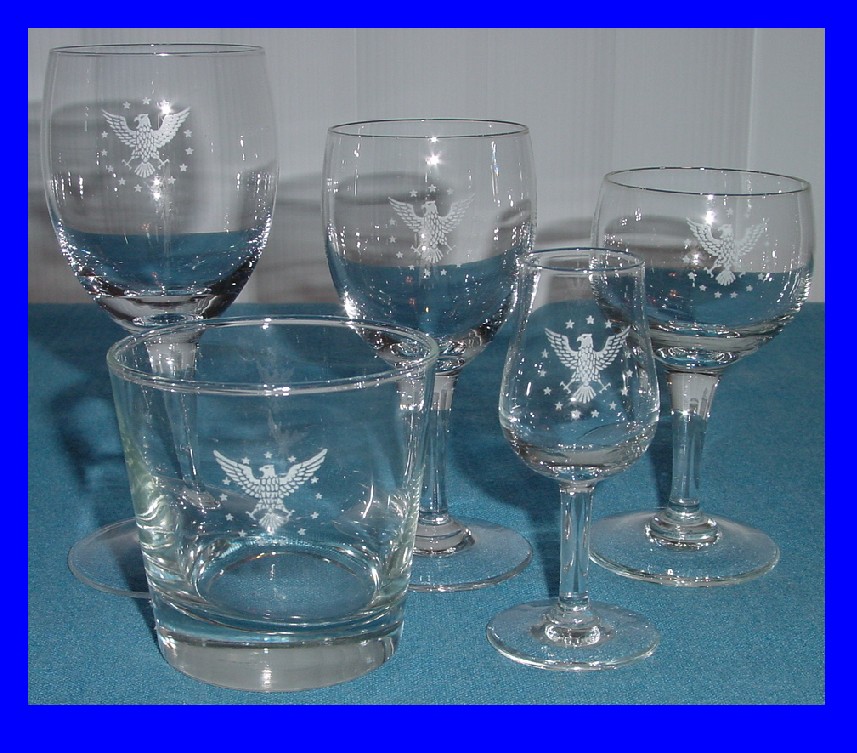
Below is a close up picture of the President pattern glasses. In the back row from (left to right) are the red wine glass (6 inches tall), white wine glass (5 1/8 inches tall), aperitif / champagne (4 ½ inches tall). In the front row (left to right) is the rock (3 ¼ inches tall) and liquor glass (4 1/8 inches tall).
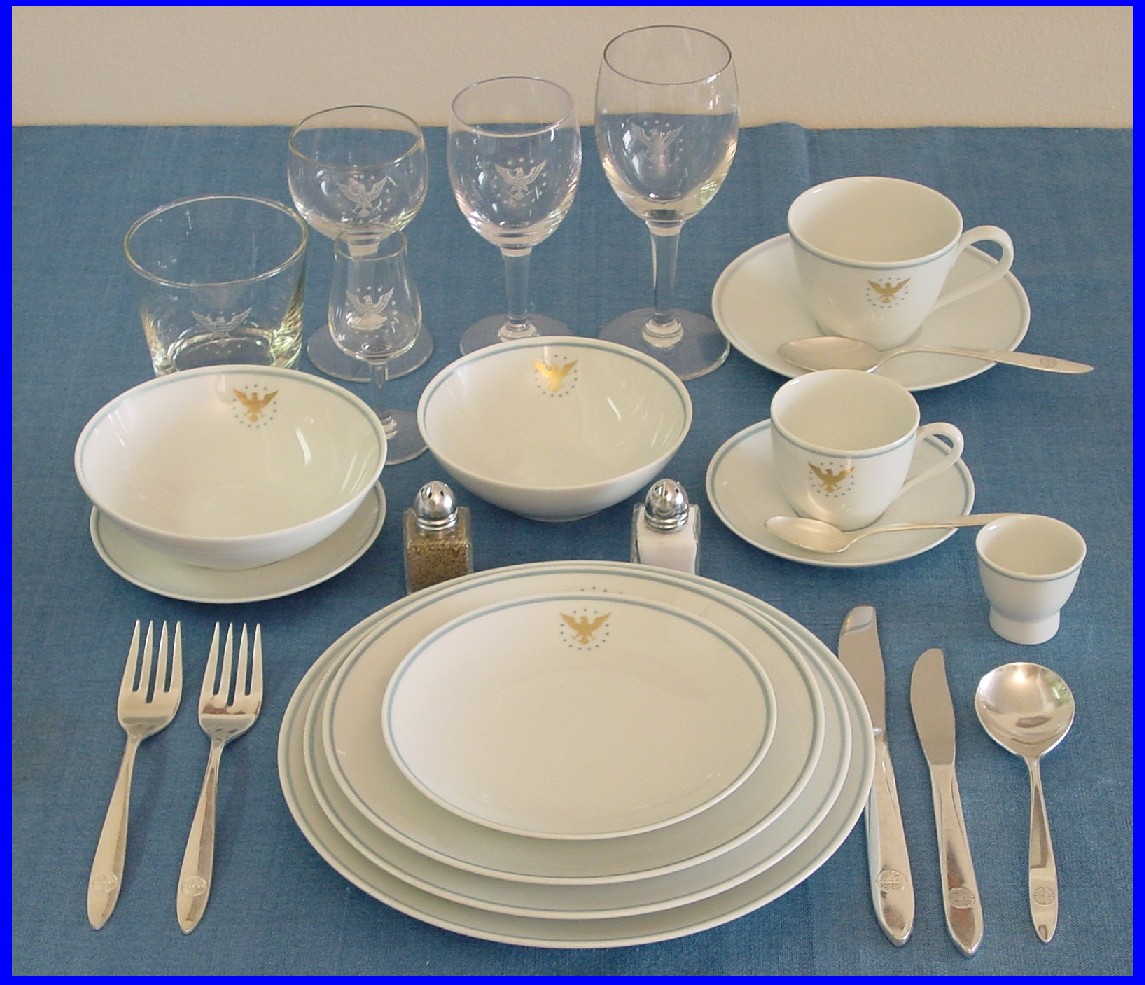
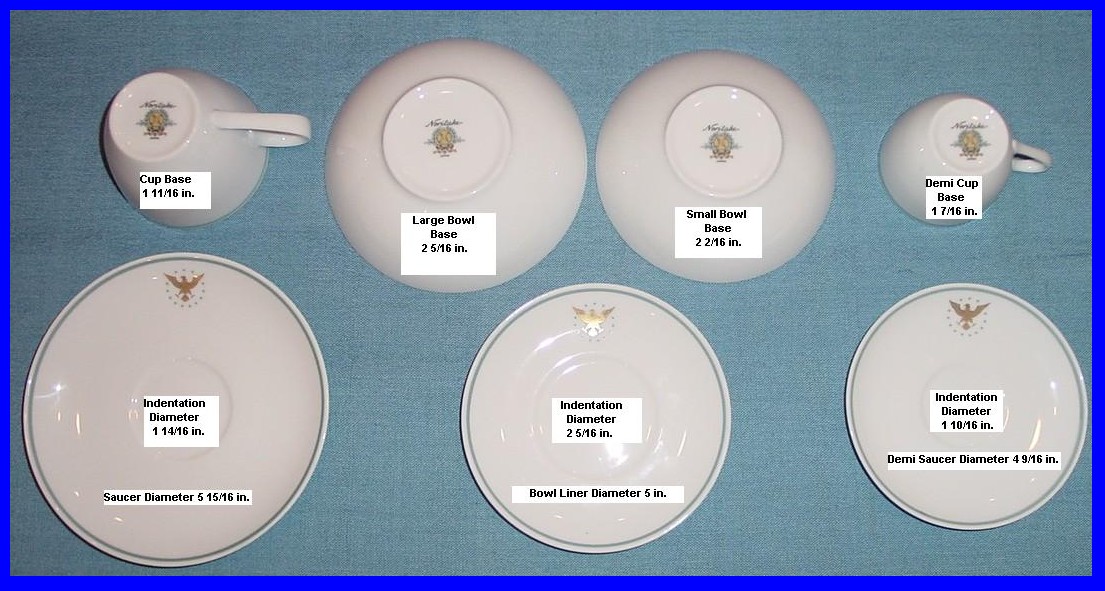
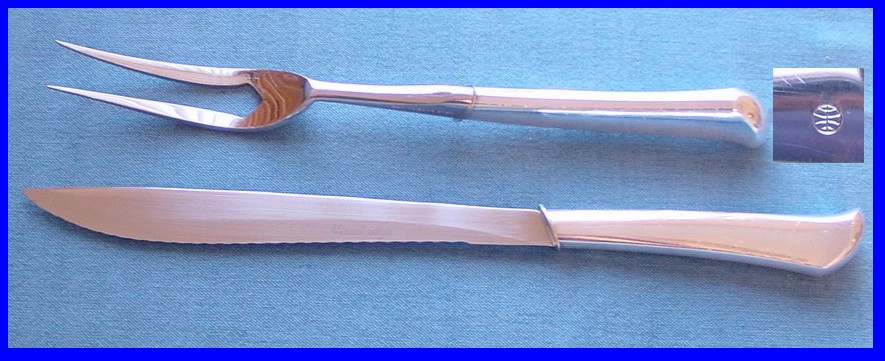

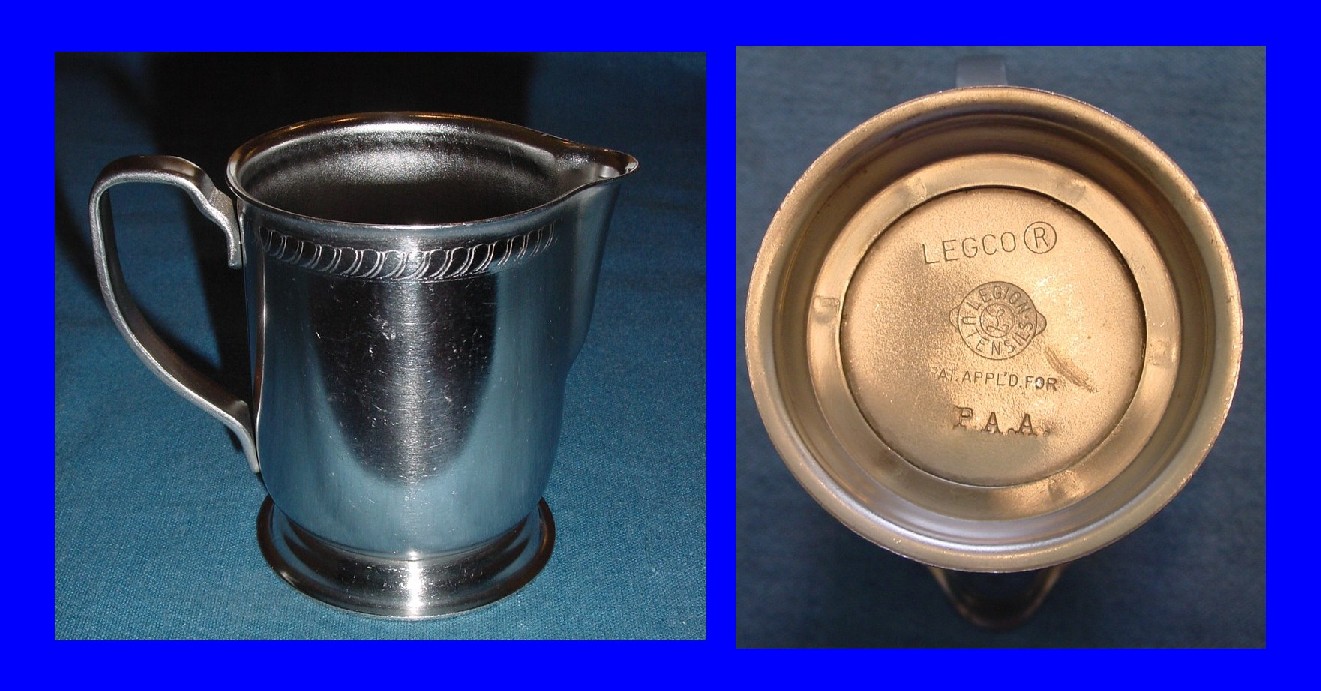
The number of pieces and their use in the President pattern can be confusing. Below is a photo of the bowls, bowl liner, cups & saucers for the pattern. It is a common mistake to believe that the bowl liner is the saucer for the coffee cup. Though the coffee cup will sit in the 5 inch bowl liner it is not as precise a fit as the larger 5 15/16 inch coffee saucer.
To the right is the President pattern being used in-flight.
A Flight Attendant is serving caviar, pate and other delicacies from the hor d’oeuvres cart.
The customer’s place setting shows the flatware with two sizes of knife (on the right), double forks of the same size and a small spoon (on the left). In the upper left is the bread & butter plate and in the upper right are the wine glasses. The silver centerpiece held a flower, salt & pepper shakers and other condiments for the meal.
A Flight Attendant is serving caviar, pate and other delicacies from the hor d’oeuvres cart.
The customer’s place setting shows the flatware with two sizes of knife (on the right), double forks of the same size and a small spoon (on the left). In the upper left is the bread & butter plate and in the upper right are the wine glasses. The silver centerpiece held a flower, salt & pepper shakers and other condiments for the meal.
"President"
China
In-Flight
China
In-Flight
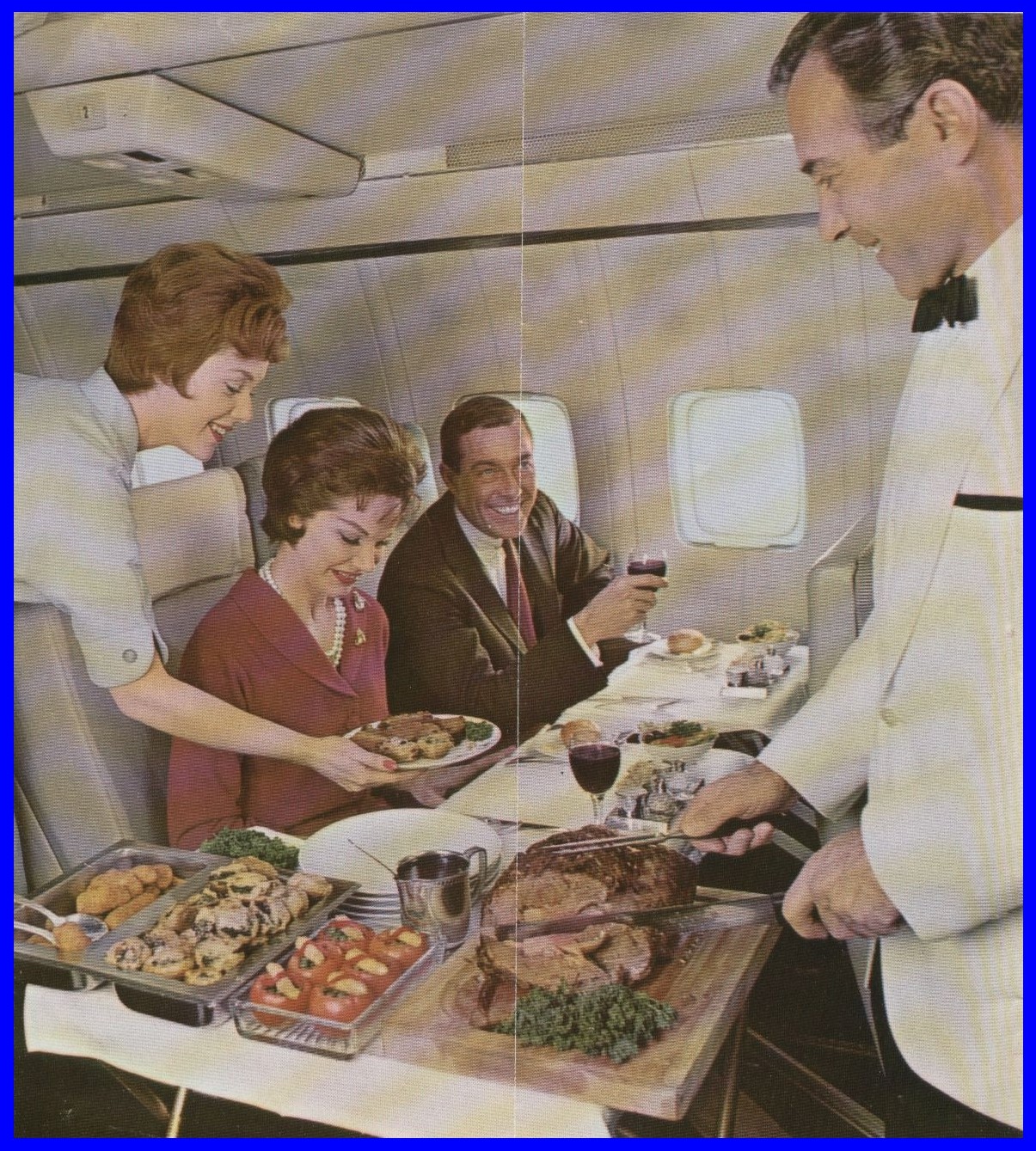
The hallmark of Pan Am’s International First Class meal service was always the roast beef cooked fresh in-flight and served from a cart. Below is a photo of the roast cart in the aisle of a Boeing 707 during the 1960s.
To the left is a silver plate carving set from the 1960s similar to the type used in the photo above.
The gravy pitcher in the photo below is the same style as the pitcher in the roast cart photo.
The gravy pitcher in the photo below is the same style as the pitcher in the roast cart photo.